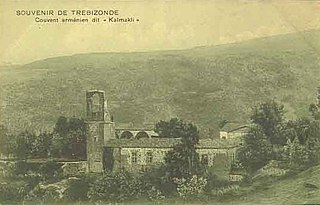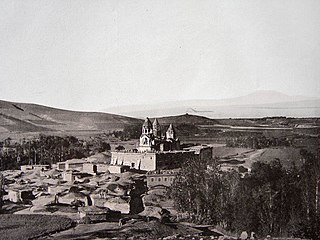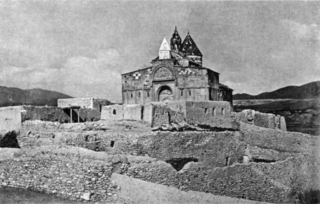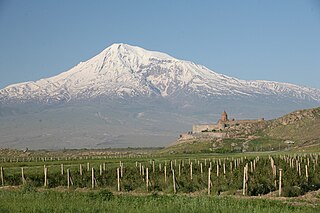Related Research Articles

Lake Van is the largest lake in Turkey. It lies in the far east of Turkey, in the provinces of Van and Bitlis in the Armenian highlands. It is a saline soda lake, receiving water from many small streams that descend from the surrounding mountains. It is one of the world's few endorheic lakes of size greater than 3,000 square kilometres (1,200 sq mi) and has 38% of the country's surface water. A volcanic eruption blocked its original outlet in prehistoric times. It is situated at 1,640 m (5,380 ft) above sea level. Despite the high altitude and winter lows below 0 °C (32 °F), high salinity usually prevents it from freezing; the shallow northern section can freeze, but rarely.

Aragatsotn is a province (marz) of Armenia. It is located in the western part of the country. The capital and largest city of the province is the town of Ashtarak. The Statistical Committee of Armenia reported its population was 132,925 in the 2011 census.

Büyükada, meaning "Big Island" in Turkish, is the largest of the Princes' Islands in the Sea of Marmara, near Istanbul, with an area of about 2 square miles. It is officially a neighbourhood in the Adalar (Islands) district of Istanbul Province, Turkey.

Sumela Monastery is a Greek Orthodox monastery dedicated to the Theotokos located at Karadağ within the Pontic Mountains, in the Maçka district of Trabzon Province in modern Turkey.

Mardin is a city and seat of the Artuklu District of Mardin Province in Turkey. It is known for the Artuqid architecture of its old city, and for its strategic location on a rocky hill near the Tigris River.
Adilcevaz is a town in Bitlis Province of Turkey. It is on the northern shore of Lake Van. It is the seat of Adilcevaz District. The town is populated by Kurds of the Bekiran tribe and had a population of 15,193 in 2021.

Kaymaklı Monastery is a ruined Armenian Apostolic monastery near Trabzon, Turkey.

Ani is a ruined medieval Armenian city now situated in Turkey's province of Kars, next to the closed border with Armenia.

Armenian architecture comprises architectural works with an aesthetic or historical connection to the Armenian people. It is difficult to situate this architectural style within precise geographical or chronological limits, but many of its monuments were created in the regions of historical Armenia, the Armenian Highlands. The greatest achievement of Armenian architecture is generally agreed to be its medieval churches and seventh century churches, though there are different opinions precisely in which respects.

Varagavank was an Armenian monastery on the slopes of Mount Erek, 9 km (5.6 mi) southeast of the city of Van, in eastern Turkey.

Narekavank was a tenth-century Armenian monastery in the historic province of Vaspurakan, near the southern shores of Lake Van, in present-day Gevaş district in the Van Province in eastern Turkey. The monastery was one of the most prominent in medieval Armenia and had a major school. The poet Gregory of Narek notably flourished at the monastery. It was abandoned in 1915 during the Armenian genocide, and reportedly demolished around 1951. A mosque now stands on its location.

Khtzkonk Monastery was a monastic ensemble of five Armenian churches built between the seventh and thirteenth centuries in what was then the Armenian Bagratid kingdom. The site is located near the town of Digor, the administrative capital of the Digor District of the Kars Province in Turkey, about 19 kilometres west of the border with Armenia, in a gorge formed by the Digor River.

Saint Bartholomew Monastery was a medieval Armenian monastery in the historic province of Vaspurakan, 23 km north-east from the town of Başkale, in present-day Turkey's Van Province, near the Iranian border. The monastery was built on the traditional site of martyrdom of Bartholomew the Apostle, who is reputed to have brought Christianity to Armenia in the first century. Along with Thaddeus the Apostle, Bartholomew is considered the patron saint of the Armenian Apostolic Church. It was a prominent pilgrimage site prior to the Armenian genocide. Today, it is heavily ruined and the dome entirely gone.

Horomos, also known as Horomosivank or Ghoshavank, is an abandoned and ruined medieval Armenian monastic complex about 15 kilometers northeast of the ruins of Ani in present-day eastern Turkey. With its collection of churches, chapels and tombs, Horomos has been described as one of the most significant spiritual and cultural religious centers in medieval Armenia and one of the largest in all the Christian East.

Surb Karapet Monastery of Mush was an Armenian Apostolic monastery in the historic province of Taron, about 30 km (19 mi) northwest of Mush (Muş), in present-day eastern Turkey.

Tourism in Armenia has been a key sector to the Armenian economy since the 1990s when tourist numbers exceeded half a million people visiting the country every year. The Armenian Ministry of Economy reports that most international tourists come from Russia, EU states, the United States and Iran. Though relatively small in size, Armenia has four UNESCO world heritage sites.

Sourp Magar is an Armenian monastery located in a forested valley in the Pentadaktylos range in Cyprus. It is de facto located in Northern Cyprus. The Magaravank stands at 530 metres and is about 3 km from the Halevga Forest Station. In addition to its historical interest as a centre of Armenian culture, Sourp Magar is noted for its picturesque location and distant views of the Mediterranean and the mountains in Anatolia. The monastery had close ties with the Armenian Catholicosate of Cicilia, located in Antelias, Lebanon.

Aghperig monastery, also known as Beyaz Kilise, is a medieval Armenian monastic complex in the Sasun Mountains of eastern Turkey. It is located 56 kilometres West of Lake Van in the north of the Sassun mountains in the Sason district in the province of Bitlis. The monastery was built above a natural spring from where it gets its name Sourp Aghperig.
Değirmenaltı is a village in Bitlis District in Bitlis Province, Turkey. Its population is 1,137 (2021).
References
- ↑ Terry Richardson, Destination expert. "The beautiful Turkish wonder you've probably never heard of". The Telegraph. Retrieved 2019-06-23.
- ↑ "Explore Lake Van and Akdamar". Eastern Turkey Tours. Retrieved 2019-06-23.
- ↑ Philandre (2013-09-29). "The Monastery of St. Thomas of Gandzak, Altinsac, near Gevas, Van, Turkey". In Search Of Unusual Destinations. Retrieved 2019-06-23.
- ↑ "St. Thomas Monastery". www.jelleverheij.net. Retrieved 2019-06-23.
- ↑ "St. Thomas Armenian monastery of Lake Van at risk of collapse". 19 June 2019. Archived from the original on 23 June 2019.
- ↑ Karanian, Matthew (2013-10-26). "Dual Survival: Man and Church in the Lake Van Region of Historic Armenia". The Armenian Weekly. Retrieved 2019-06-23.



